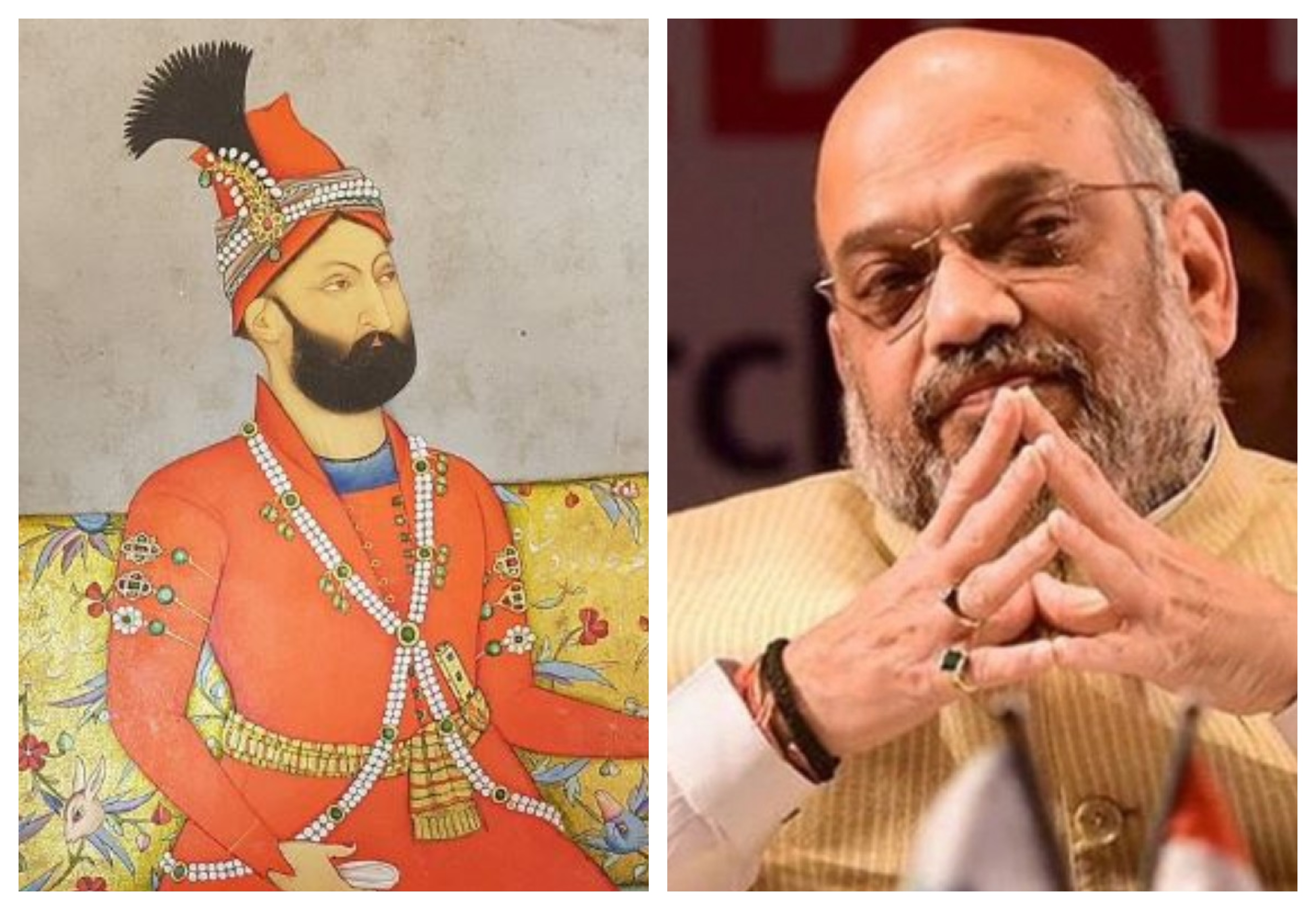
Nader Shah then, Amit Shah now: Identical reign of two Shahs in Delhi
Once upon a time, the colloquial wisdom in Delhi suggested it was better to eat, drink and be merry because whatever else people had would anyway be taken away by the Iranian invader Nader Shah. We may, fortunately, not have been born in Nader Shah’s Delhi. From what we are witnessing today, it can easily be presumed that it would not have been too different from Amit Shah’s Delhi.

Once upon a time, the colloquial wisdom in Delhi suggested it was better to eat, drink and be merry because whatever else people had would anyway be taken away by the Iranian invader Nader Shah. We may, fortunately, not have been born in Nader Shah’s Delhi. But from what we are witnessing today, it can easily be presumed it would not have been too different from Amit Shah’s Delhi.
For the past three days, Delhi has been burning, like an ordnance depot set on fire by unapologetic rabble-rousers. Armed gangs of murderers are roaming its streets, executing, maiming people at will and torching shops, houses and places of worship. While the fires spread, the cops have been watching helplessly, even as their own men are getting shot and brutally beaten.
There has to be an apt word for this lawlessness and anarchy. And the only word that comes to mind is Amit Shahi.
This brand of Amit Shahi could mean several things, depending on your knowledge of India’s history and idioms. The easier way to understand this violence is through the old adage popularised by Bhartendu Harischandra’s story: andher nagri, chaupat Raja (a state where law and order are nonexistent). If a place like Delhi continues to burn for three days, if all the Shah’s men and horses on the ground are not able to restore peace, it says a lot about the home ministry’s competence.
But this argument of the home ministry being incompetent to bring rioters to their knees would not just be simplistic but completely flawed.
Related news: Kejriwal demands army deployment in Delhi as death toll soars to 20
Just a few months ago, the same home ministry took extra-ordinary preventive steps to ensure Kashmir does not turn into a cauldron after its special status is revoked. Additional forces were sent to the ground, leaders were detained and civil liberties were rescinded. Till date, in spite of doomsday predictions, Kashmir has remained quiet.
Clearly, competence is not an issue when it comes to the Delhi riots. The more logical explanation would be that the Gujarat model of hate and bloodshed has gone national. All its hallmarks are visible in the mayhem that has been unleashed on Delhi over the past three days.
First, an environment of victimisation of the minorities — both perceived and real — was created through a mixed messaging on the changes in citizenship laws and national register of citizens (NRC).
While the home minister categorically listed the chronology of the events to expect — “first there will be NRC and then the amended citizenship laws would be applied, he had said — the Prime Minister and some of his colleagues contradicted Shah — a classical stratagem that gives everyone the liberty of plausible deniability and yet keeps the pot boiling.
That the minorities and Indian liberals would protest this discriminatory idea of citizenship based on religion was expected — it was, in fact, a sine qua non for the strategy to polarise.
So, everything was done to provoke a reaction that would lead to anarchy, bloodshed, radicalisation of people on both sides of the divide and drive a deep wedge through the society. Heavy and brutal force was used to quell protests on campuses, cops were given a free hand to deal with mobs without fear of official retribution or enquiry and provocative statements were made to ensure the peaceful protests in Delhi turn violent so that the state would have a valid reason to suppress it brutally.
The current violence shows all the hard work to pit Indians against Indians has finally paid off and now the political perpetrators of anarchy can plan their next moves to maximise their gains from the bloodshed.
How did protests that were peaceful for a long time suddenly turn violent when the Supreme Court was trying to mediate a solution? Why did the police watch in silence for three days as armed mobs clashed with each other? How did dozens of people end up injured with bullet wounds? Why has the Prime Minister been silent so far on the violence when it is his moral and constitutional duty to stop this bloodshed?
Related news: ‘Shoot at sight’ ordered in Bhajanpura, Yamuna Vihar, Shiv Vihar
These questions, of course, are irrelevant for those who know the Gujarat model of anarchy, which is premised on the belief that nothing works for the current BJP more than pitting Indians against Indians.
There would, of course, be a price to pay for this obnoxious phase in Indian politics. The combination of a polarised society, a partisan police force and leadership with questionable morals and ethics has always taken a country down the path of destruction and strife. But then, why fret over the future.
As our ancestors used to argue, eat, drink and be happy. Whatever else you have would anyway be taken away by the Shah currently invading our minds.


